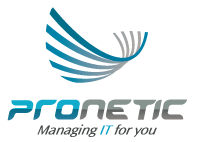Tech Insight : What Is 3D Printing?
In this article, we look at what 3D printing is, its benefits, and how it is being used now to add value in many different industries.
What Is It?
3D printing (“additive manufacturing”) describes how, using a special printing machine, a three-dimensional object can be constructed from a CAD model or a digital 3D model. The 3D printing machinery builds up layers of material to create a 3D object. The machinery is directed by ‘slicing software’ which slices a 3D model into hundreds or thousands of layers, thereby instructing the printer on how to build up layers to create the finished model. 3D printing is used across the board from hobbies to state-of-the-art commercial purposes.
Made of What?
3D printing can use different materials and many different processes to build an object. For example, vat polymerisation uses a liquid photopolymer that’s cured by light, material extrusion uses molten thermoplastic that’s deposited through a heated nozzle, and powder bed fusion uses powder particles that are fused by a high-energy source. The most popular type of 3D printing (at the consumer level) is fused deposition modelling (FDM) which works by extruding thermoplastics (ABS and PLA), through a heated nozzle, thereby melting the material to build up layers of plastic.
Value Highlighted In The Pandemic
Some of the value of 3D printing was highlighted in March/April 2020 when large-scale 3D printing was used to meet the huge demand for nasal swabs in the US (Northwell Health and FormLabs), and for making PPE like face shields in the UK (University of Sheffield, iForge).
Global Market Size
The recent MarketsandMarkets forecast predicted that the global 3D printing market will grow by a massive 22.5 per cent per year from $12.6bn this year to $34.8bn by 2026.
Examples of Industries Using 3D Printing
Some examples of how different industries are using 3D printing include:
– Healthcare: Used to make 3D dental implants, knee implants and custom 3D-printed orthotics/insoles (Belgian 3D printing firm Materialise).
– Aerospace: Using 3D printing to make aircraft parts such as castings for gear cases and covers, fuel tanks, and transmission housings, as well as to create fixtures, jigs, gauges, and templates (to reduce production costs).
– Manufacturing: Using 3D printing to create custom, low-volume tooling and fixtures thereby saving costs and allowing designers and engineers to spend more time on revenue-generating parts.
– Education: The education sector is using 3D printing in many ways e.g., parts for educational tools to help PhD students who use the printers for research, and colleges (e.g. Purdue in the US) using 3D printing to help students to learn about emerging additive manufacturing materials and technology.
– Robotics: Companies in the robotics field use 3D printers to help (quickly) produce low cost, low weight parts such as end-of-arm tooling and end-use parts (grippers, fingers, and other robot components).
From Prototype to Developing Final Products
The development of 3D printing is such that the industrial manufacturing sector is now moving from a prototype phase of 3D printing adoption to developing final products.
The Benefits of 3D Printing
Some of the main benefits of 3D printing include:
– Reducing costs and waste (e.g. in part manufacture).
– Speed and helping to reduce time to market (e.g. rapid prototyping).
– Flexibility. For example, unlike traditional manufacturing where a new tool, mould, die, or jig is required to make a new part, a 3D printer can make almost anything that fits within its build volume.
– Quality and consistency, due to step-by-step assembly and monitoring.
– Accessibility. 3D printers can be used by a much wider range of people/businesses than traditional manufacturing setups.
Disadvantages of 3D Printing
Some of the disadvantages of 3D printing include:
– Limited materials (that can be used by printers to build objects).
– High costs of equipment and products.
– Restrictions on build size (based on the size/capacity of the printer).
– The need for post-processing, i.e. most 3D printed parts need cleaning up to remove support material.
– Cost per unit doesn’t reduce for large volumes unlike injection moulding.
What Does This Mean For Your Business?
3D printing is still in the early phases of growth and although set up costs can be relatively high, it is delivering value in several different sectors in areas such as rapid prototyping in manufacturing and producing very specialised customised implants for healthcare. 3D printing has both hobby and commercial applications and businesses that design and/or manufacture products or need components may decide to look at ways in which 3D printing could have advantages over traditional methods and supply that could contribute to cost, speed, and flexibility benefits, and could be the source of new competitive advantages.
